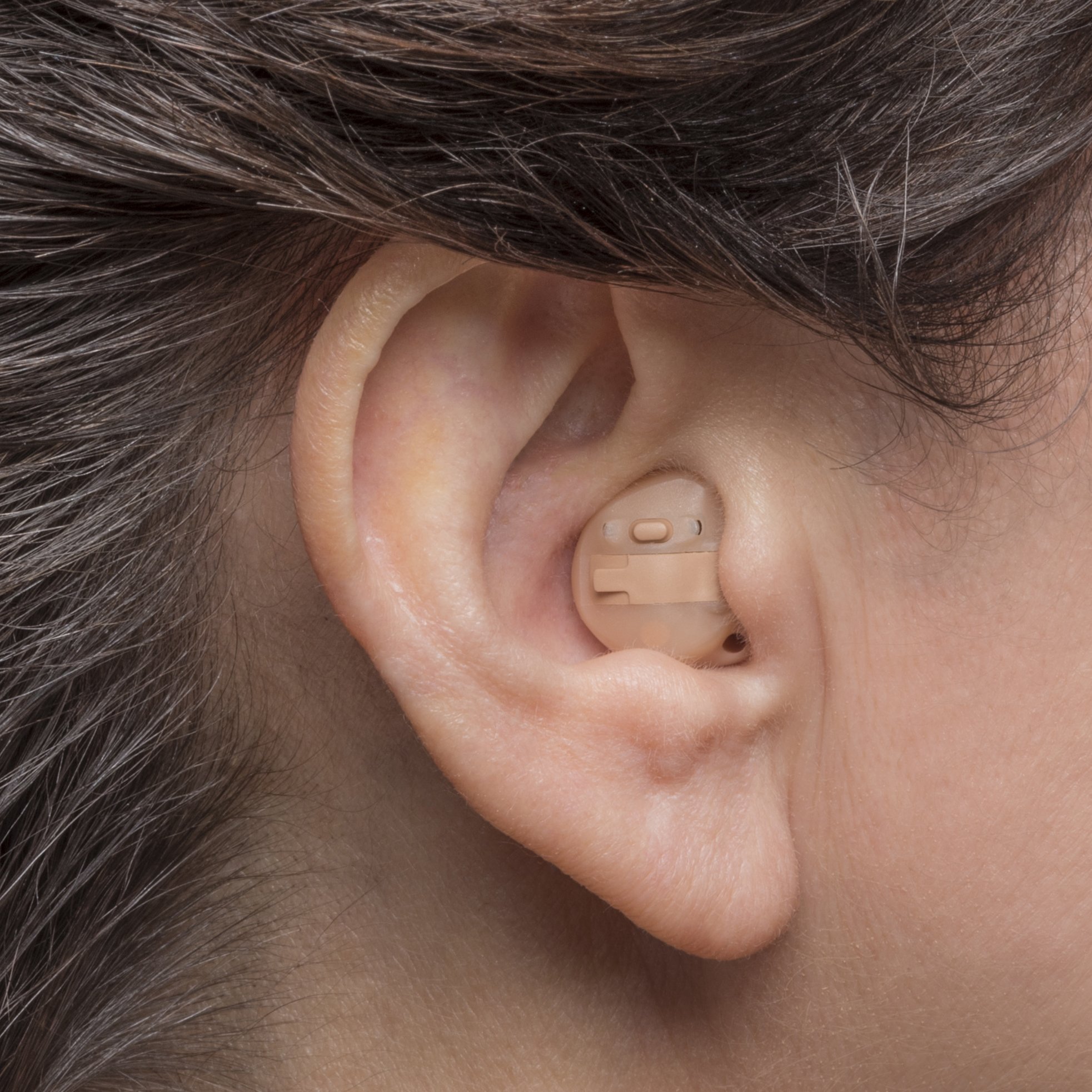What Type of Hearing Aid Is A Good Fit For Me
The most expensive hearing aids may link to your smartphone through Bluetooth for about $3,000 for bundled services (See Bundled v Unbundled). You can connect to your phone, FaceTime, Skype, Zoom, and other conference calls, as well as Netflix, music, and other media, using your hearing aids. The makers of high-end hearing aids state that these features assist them deliver the clearest, crispest sound possible in every circumstance. They may also include machine learning or artificial intelligence.
Receiver-In-Canal (RIC) Hearing Aids
Receiver-in-canal (RIC) hearing aids are made for those with mild to severe hearing loss and transmit sound through a tiny speaker that sits inside the ear canal with the aid of a covert speaker wire covered in plastic. These are the most popular ones. Similar to a popular RIC hearing aids like the Signia Styletto X or Oticon MORE.
In-The-Canal (ITC) Hearing Aids
In-the-canal (ITC) hearing aids are created specifically to fit inside the ear canal and portion of the outer area of the ear, and all components reside inside a lightweight plastic shell. They can accommodate those with mild to severe hearing loss. ITC hearing aids usually range in price from $1700 to $3700 per device.
Completely-In-Canal (CIC) Hearing Aids
Completely-in-canal (CIC) hearing aids are smaller and less noticeable than ITC hearing aids because they are manufactured specifically to fit within the ear canal. Typically, they are made to support those with mild to moderate hearing loss. Depending on the customizations and services chosen, a well-liked CIC hearing aid, can cost anywhere between $1,500 and $4,000 per aid.
Invisible-In-Canal (IIC) Hearing Aids
Last but not least, invisible-in-canal (IIC) hearing aids are the tiniest ones offered and are positioned similarly to CIC aides deep inside the ear canal. The price of the popular IIC hearing aid, can range from $1,500 to $3,100 per device, depending on the customizations and services that are chosen.
In comparison to cheaper options, these hearing aids could also be discreet and tiny. For instance, IIC type makes the hearing aid virtually invisible by resting deep in the second bend of the ear canal. With that being said, it is best to check with your Audiologist to make sure that is a good fit for your hearing loss as well. According to Jessica Galatioto, director of audiology at Columbia University Medical Center in New York City, "These smaller devices must be built specifically for each patient to fit the characteristics of the ear canal." Rechargeable batteries are another standard feature of hearing aids. These batteries can last for up to 30 hours without needing to be recharged (typically done at night).
On the opposite end of the scale, entry-level hearing aids are priced between $1,000 and $1,700 per. These hearing aids often include less complex technology with fewer channels and algorithms to control sound amplification and react to noisy environments. They may not be sufficient for your listening needs because they are only more economical but also simpler to use.




